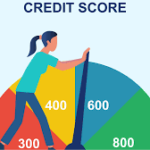Health awareness campaigns are the most important tools in the field of public health, educating the community on various medical issues. Developing engaging content for these campaigns involves a very strategic approach in message development so that messages resonate with different audiences and inspire action. For health awareness content to be effective, it needs to balance information accuracy with relatableness of the story and presentation creativity. By understanding what the audience needs and prefers, campaign creators can develop captivating, educating, and motivating materials.
Understanding the Target Audience
A successful health awareness campaign ought to start with profound knowledge of the target audience. It shows that through the understanding of who one is addressing, creators can carve out the content to meet the particular needs, preferences, and cultural contexts of the group in question. For example, younger audiences would be reached more effectively through campaigns using digital platforms and visuals, while older adults would be better targeted with print materials and clear, straightforward language.
Research via surveys, focus groups, or community engagement activities helps to better understand the audience. Through this process, information on their health concerns, ways of communicating, and pre-existing knowledge is obtained. Aligning the content with such information allows the creators of the campaign to ensure the materials are relevant and relatable.
Clearly and Effectively Presenting Information
Clarity is essential when creating health awareness content. Medical and health-related topics can be complex, and presenting them in a straightforward, accessible manner is crucial to engage the audience. Avoiding jargon and using simple, everyday language helps ensure the message is understood by a wide range of people, regardless of their education or literacy levels.
It would also allow for improved comprehension and retention by making added use of infographics, charts, and even videos. These tools break down the complicated topic into easily digestible and visually appealing formats. Storytelling-both through real-life examples or testimonials-make this content all the more relatable and emotionally impactful. Hence, clarity and creativity together mean the message of the campaign does come across.
Choosing the appropriate channels of communication
The choice of appropriate platforms for the dissemination of health awareness is very important in order to reach targeted audiences. Different groups consume their information through different channels, so a campaign creator has to make a choice of methods fitting their audience’s habits. Social media platforms, websites, and email newsletters are effective for tech-savvy audiences, while posters, brochures, and radio ads may prove to be more effective in areas where access to the internet is limited.
It is also good to diversify channels for communication to ensure that the campaign reaches as many people as possible. A multi-channel approach, from digital to traditional, allows better visibility and amplifies the message. Collaboration with any local trusted organization or influencer would help in extending the reach of the campaign and also make it more credible since these institutions have already established a relationship with the target audience.
Utilizing 3D medical animations
3D medical animations are a great way to enhance health awareness campaigns. These animations can be visually appealing while clearly explaining even the most complex medical ideas. For instance, they can show how a disease might progress, the effect of certain medications inside the body, or how a surgical procedure is conducted. This visual approach helps demystify medical topics, making them more accessible to the general public.
Moreover, 3D animation in campaigns will also attract the attention of audiences in a more captivating way. The nature of these sets of animation makes viewers keep on watching them, and thus retaining the critical health information is easily digested. These are particularly useful in digital campaigns where eye-catching visuals must be made to capture clicks and shares.
Encouraging interaction and participation
Engaging content is a way to involve the audience rather than just passively receiving information. The interactive elements, such as quizzes, challenges, or social media hashtags, encourage them to be more personally attached with the campaign. For example, a healthy eating campaign may give a challenge to share their favorite recipe; thus, they post pictures of their meal on the internet using a specific hashtag.
Events in the community, webinars, or Q&A sessions with healthcare professionals are other ways of engaging people. These activities allow the audience to ask questions, share experiences, and learn more interactively. Such promotion of two-way communication builds trust and ensures that the campaign feels inclusive and responsive to the audience’s needs.
Monitoring and Refining Content
Even the most thoughtfully designed health awareness campaigns can always be iteratively improved. Monitoring responses, such as the level of engagement, response, or event attendance, offers valuable insight into what works and what does not. Creators of such campaigns need to make use of that information to tailor their content by modifying language, visuals, or methods of delivery, where appropriate.
It also gets more updates on content to make it fresher and more relevant. Health issues and public concerns are changing, and so should the campaign. Tuning in for feedback from an audience and wider trends means creators will be sure their materials are effective.
Conclusion
To develop engaging content on health awareness campaigns, thoughtful considerations toward an audience-centered approach will work. It ranges over a deep understanding of the audience, presenting information in clear ways, selecting appropriate media channels, and encouraging interaction that enhances the reach and impacts of campaigns. The ability to break down intricacy into simple concepts and entertain is multiplied manifold with innovative gadgets like 3D medical animation. These continuous monitoring and refinements ensure these efforts are meaningful for years to come. Health awareness campaigns can be used to inspire positive change and empower communities to make informed decisions about their health through strategic planning and creativity.






